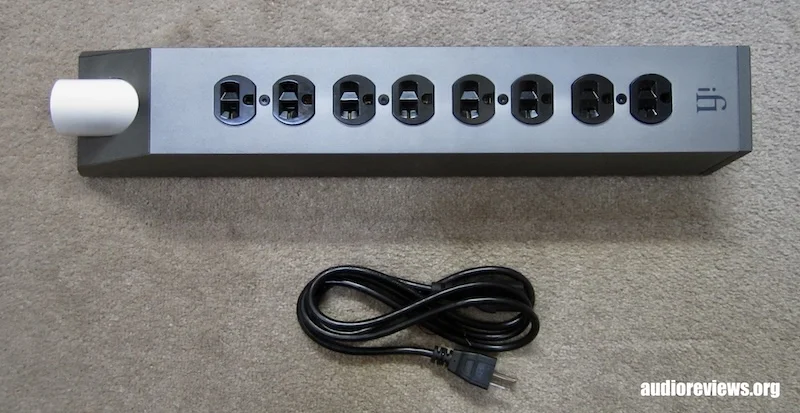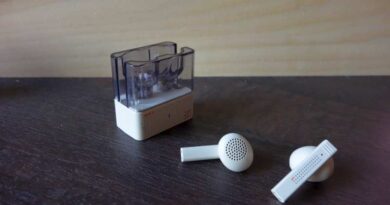ifi Audio PowerStation REVIEW – Fight The Power
The £74900 ifi Audio PowerStation was a loaner upon my request and I thank ifi Audio for getting the opportunity of testing their high tech.
In this Article
Introduction to Noise
I have always been interested in the more subtle and less obvious aspects of Hifi…such as analog & digital cables and USB decrappifiers, gear that does not generate or amplify sound but rather helps mitigate signal contamination and degradation, and that has an exceptionally long lifespan we carry over from one generation of electronics to the next. New to me are “premium” power cables and power cleaners. ifi Audio offer both aiming to avoid the superposition of gremlins onto the audio signal.
Many people complain that such devices do not make a difference, but, in order to remove gremlins, you must have some. No problems means no fix is required. And if you have them, you need to address all origins of them. There are often more than one source. These things can be complex and are not black and white.
But what problems can exist? We are talking of the audio signal being contaminated by “noise”, which are superimposed impurities.
Noise can originate in:
- the power grid
- power supplies
- computers, phones, streamers via USB cables and backwash from DACs and amplifiers
- the atmosphere (radio stations, cellphone towers, Bluetooth devices, AM/FM radio)
There are two principle kinds of noise, electromagnetic interference (RMI) and radio frequency interference (RFI) (there is also high-frequency switching noise between 500 kHz and 2 GHz in switching mode power supplies which we ignore as it does not apply here). By definition, interference originates from a source external to a signal path and produces undesired artifacts in the signal, which affects sound quality.
The electricity (AC) coming out of our mains has a negative effect on the sound quality of our devices that varies with time and also location. It contains RMI and RFI, the amount of which depends on our living environment. It will be worse in a city apartment building than in a house in the country, and it may fluctuate with the time of day.
Power supplies convert AC to DC to drive our equipment. RFI is generated in the diode bridges of our equipment and picked up by (unshielded) power cables. So we get interference and therefore sound degradation from both directions.
Noise from the power grid (AC), is typically minimized by filtering through power cleaners/conditioners (such as the PowerStation), by sophisticated power supplies, and by complete power regeneration (e.g. PS Audio’s power regenerator). It can be backwashed by the electronics as we have experienced with the EarMen Sparrow dongle DAC.
Power cables draw the largest current and therefore produce the largest electromagnetic field (compared to audio cables). Cords with wires shielded inside reduce this electromagnetic field and also mitigate the noise incoming from our equipment by avoiding magnifying the interference patterns.
Noise annoys
Manchester’s Buzzcocks got it right long ago: Noise annoys! It is simply “unwanted sound“. Superimpose it on the audio signal and you get a muddled sound or shrillness (depending on the type of noise). Remove the noise, and you gain transparency and dynamics.
One example: about 4 years ago, I tested the ifi Audio iPowerX 5V switching mode power supply. Compared to generic power supplies (including ifi Audio’s own standard iPower), the “X” contributed to a “much better” sound. You can, of course, combine the iPowerX with the PowerStation for optimal results.
I can also present lots of successful USB noise removal with USB cleaners such as the ifi Audio iPurifier 3 and the iSilencer+, which is somewhat irrelevant for this analysis as we neglect this cleaning aspect in the PowerStation review. But it should always be kept in mind nevertheless.
What is the ifi PowerStation?
The ifi Audio PowerStation looks like a fancy powerbar, made of metal. It comes with a detachable power cable and a manual. Thye device principally performs the following two tasks:
- It removes RFI and/or EMI noise
- It is a surge protector
The ifi Power Station addresses noise that comes from the power grid, but not noise and poorly timed data streams (“jitter”) coming from your music source via USB’s data and power lines. It is therefore only a partial cleaning device. ifi Audio offers the iPurifier 3 and the iSilencer+ for USB cleaning. I recently tested ifi Audio’s iPurifier 3, which is now an integral part of my headphone audio setup.
The ifi Audio Powerstation features 8 power outlets in USA/Canada/Japan, and 6 in UK, EU, and Australia….hey, good to live in Canada! Let’s have a look at the specs. ifi Audio tell us very little detail about the technology used, but sadly lots of jargon.
Specifications PowerStation
| Noise Reduction | > 40dB (> 100x) |
| Operating Voltage | 90V – 265V |
| Surge Protection | max. 30,000A @ 1,000V/10uS |
| Outlets | 8 (USA/Canada, Japan), 6 (UK, EU, Australia) |
| Dimensions | 478(l) x96 (w) x76 (h) mm |
| Weight | 1.98kg (4.37 Ibs) |
| Tested At | £74900 / $999 CAD |
| Product Page | silent power.tech |
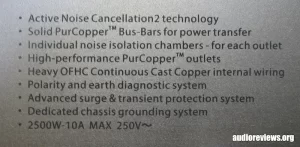
What we want the PowerStation to do is removing as much as possible EMI and RFI noise from the grid, backwashed from the electronics, and from the air. ifi Audio claims they use active noise cancellation to address this issue, a technology similar to ANC headphones. The device further avoids buzzing and humming through “intelligent ground”, even if the system is already earthed. A third key feature is called “polarity earth diagnostics” and refers to a smart diagnostics system that helps to avoid potential issues. OK, this last one beats me.
The Power Station contains an AC Purifier as part of their “Wireless Purification System”. Lingo aside, what is meant it that noise is removed without side effects, that is no dynamics is lost.
The PowerStations hosts 13 AWG 99.9999% pure OFHC (oxygen-free high-conductivity) continuous-cast copper internal wiring for optimal conductivity and solid multi-layered insulation.

The PowerStation from below.
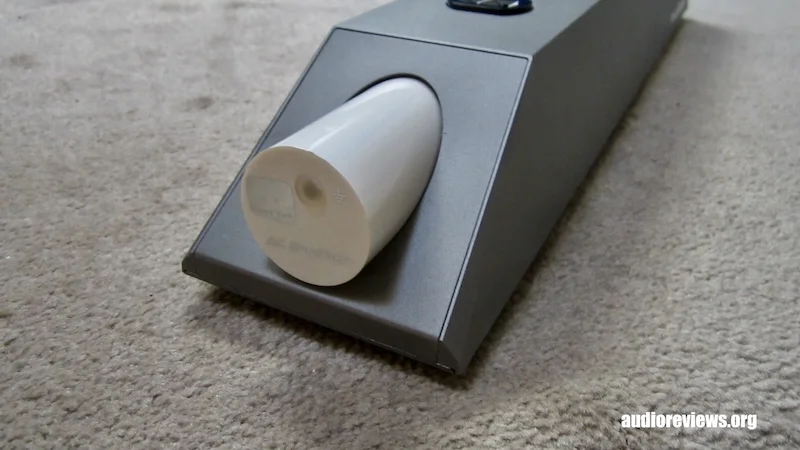

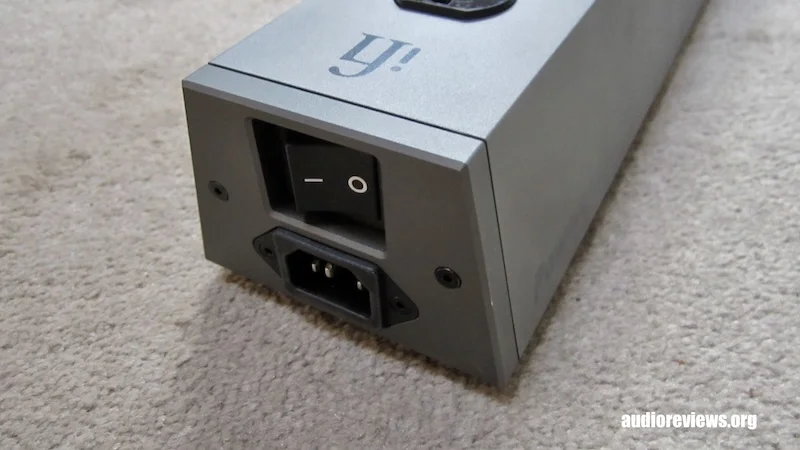
The PowerStation integrates an AC Purifier. More AC Purifiers can be added. You can use a more premium power cable than stock.

The US version offers 8 outlets.
Testing the ifi Audio PowerStation
The way I test a device such as the ifi PowerStation is NOT by A/B-ing, that is constantly switching the DAC/amp between mains outlet (or a regular powerbar) and the ifi Powerstation. I rather do one or the other for a longer period of time, then swap power. In the meantime, the sound will have burnt itself into my memory so that differences, if distinct, are clearly audible. If changes are small or negligible, you better stay away from such an expenditure.
In this case, I took the PowerStation out of the box, connected the FiiO K17 DAC/amp, and plugged the ifi PowerStation into the mains. Then I listened for about 7 weeks, the music source always being my battery-operated iPhone 16e. As headphone, I mainly used the Sennheiser HD 600 and, occasionally, the Sennheiser HD 550, both on the 4.4 mm balanced circuit. Things sounded great.
I then connected the FiiO K17 to a regular $30 Belkin powerbar and listened again. The music was thinner, less dynamic, narrower, it lacked homogeneity, transparency, and cohesiveness. Something was very clearly off. With the ifi PowerStation, the music was richer, much better balanced, with much thicker, better defined bass lines.
I reported my findings to a Facebook discussion group, and it was questioned whether it was a malfunctioning Belkin power bar that may have caused the differences. A justified concern. I therefore repeated the test by plugging the FiiO K17 directly into the mains outlet…which somewhat misses the point: I have 2 wall outlets available for umpteen devices, hence I need powerstrips such as the Belkin and ifi PowerStation, which have 8 outlets each.
The result was the same for both the mains outlet and the Belkin: the music lacked pizazz and dynamics, I always had the feeling I needed to turn up the volume to get more “oomph”. The music was comparatively gooey with lesser separation, and the bass lines sounded muddled. The Belkin was clearly not faulty.
In summary, yes, the ifi PowerStation does what it promises, and very clearly so. The problem for the reviewer is that they don’t want to go back to their Belkin strip, sigh.
ifi Audio PowerStation: test passed, bingo!
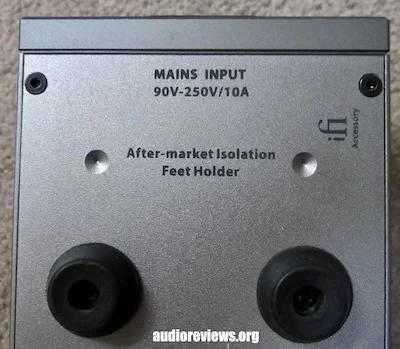
What Else?
You can further improve the effect of your PowerStation by customizing it. For example, you can add third-party isolation feet and/or use a more premium noise dissipating power cable than stock. ifi Audio recommends grouping analog and digital devices and separating them by an additional AC Purifier.
Once you are done with AC power noise mitigation, you can address USB noise using devices such as iSilencer+ and iPurifier 3. ifi Audio offers a plethora of devices on their Silent Power site. I avoided large USB noise in my testing by using a small, battery operated device (iPhone 16e) with few internal clocks.
Concluding Remarks
It may be painful forking out relatively much money for an “audio” device that does not play or amplify music, but considering such device improves the sound of generations of our electronic components, it may actually be a wise investment in the long run.
As to me, before testing the ifi Audio PowerStation (and the AudioQuest PowerQuest 303 previously), I had been somewhat skeptical of the benefits of such power cleaners – not anymore. On the other hand, I had previously experienced the benefits of good-quality power supplies such as the ifi Audio iPower X and USB-cleaners such as the ifi Audio iPurifier 3.
Don’t forget, these devices are not black and white, they only work where and when (!) needed. But if you own lots of premium electronics, you should at least try one of them. It may be worth it big time.
Until next time…keep on listening!

Disclaimer
Our generic standard disclaimer.



